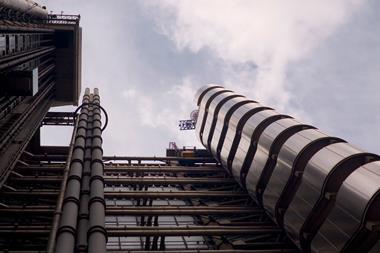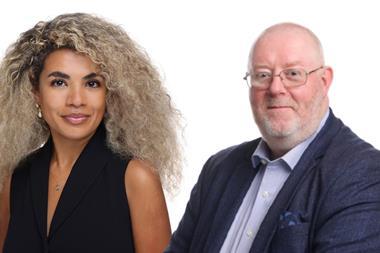Down the years, insurers have been able to amass huge data and expertise on the various classes of insurance, enabling them to provide cover and premiums accordingly. But the internet is a new frontier without a long history and is making the provision of intellectual property (IP) cover hazardous. And having an idea patented is no guarantee of ownership.
A recent report to the Association of British Insurers (ABI) by law firm Cameron McKenna revealed insurers could be unknowingly exposed to e-business risk in their standard IP policies and has increased this uncertainty.
Insurers may now come together to seek a blanket exclusion of electronic business from their standard IP policies to avoid any such claims hitting them without warning.
Technical manager of the British Insurance Brokers' Association (Biba), Peter Staddon, says reinsurers have been badly hit by e-risks. “The issue has to be sorted before the reinsurance renewal season begins this month. If they change their contracts by the use of exclusion clauses, then that would have a knock-on effect on the primary market,” he says.
However, there has to be a market solution – not least in agreement with the brokers – because unilateral exclusion could fall foul of the Competition Act. Talks are on to try and solve the problem.
Groupama director of underwriting and strategy, Paul Brearton, agrees the ABI report might stimulate a number of insurers towards exclusion. He says: “E-business cover is a step into the unknown and the market is very nervous. Groupama is not looking to insure specialist internet builders and enablers, but traditional manufacturers or wholesalers with web sites. We are looking for individual covers.”
This “pick-and-mix” approach by Groupama covers a number of areas such as loss of documents, IP, breach of confidence, defamation and business interruption.
What's in a name?
So what's in a name or an idea? A great deal, if the amount of litigation taking place as companies fight to retain their brand, image and products is anything to go by. Indeed, these rights are now seen in many boardrooms as their most important asset.
Economically, the UK's creative industries are worth £60bn a year – about 4% of GDP – and last year accounted for £7bn in exports. They employ 1.4 million people and, collectively, grow twice as fast as the UK economy as a whole.
As well as being valuable in themselves, creative companies' ideas have a value too. IP can be used as part of the balance sheet to aid a company in raising extra capital for investment purposes.
The threat to IP is considered so serious that earlier this year the government set up the Intellectual Property Advisory Committee (IPAC) to provide Whitehall with independent advice.
Cybersquatting – where someone else buys the name or brand of your company and offers to sell it back at a price – is also a serious problem. To assist victims of cybersquatting, the Internet Corporation for Assigned Names and Numbers (ICAAN) has adopted a dispute resolution policy to resolve international domain name disagreements. It is relatively cheap and fast and can prevent expensive legal action. However, the director of copyright at the UK Patent Office, Anthony Murphy, warns the law alone is not enough to stop copyright crime.
He says: “The idea that counterfeiting and piracy are victimless crimes is an all too common perception. Intellectual property crime has a huge impact on local communities and local jobs and can be linked to the deadliest forms of organised crime.”
Murphy adds the copyright battle against music swapping site Napster may have been won, but that more legislation is required. He says: “Napster was easy to sue because it had a base in California, but more sophisticated rivals don't have a central file server, so are very difficult to pin down. Where do you sue them?”
One current court case involves Random House, the world's largest English language general book publisher, and RosettaBooks, a small electronic publisher. The case was over who owns the distribution rights to manuscripts of authors. Random House argued that previous publication of titles entitles them to the rights to publish them in electronic form as well. However, the US district court judge backed RosettaBooks, ruling that the ownership of electronic manuscripts belongs to authors and not publishers. Random House is expected to appeal the decision.
Hiscox IP manager, Peter Roedling, says: “Patent agents and lawyers with IP practices had a very jaundiced view of insurance products available because they thought they did not work when they were needed and were fairly expensive. Now there is a new generation of products that address the inadequacies of the former products.”
Hiscox now includes damages in its Intellectual Property Protector policy and also enables companies to enforce their rights against others. Roedling says: “It allows a small firm to enforce their rights and not get trampled on. We are offering enforcement and defence together.”
He says directors are hugely interested in IP because the Turnbull report on corporate management makes directors responsible to shareholders for managing the risks of the business.
Keeping hackers at bay
Marketing manager of Intellectual Property Insurance Services, Ian Macleod, says: “It should be as natural to protect your ideas from predators by insurance as it is to protect your house the moment you have bought it. If people were to look at it in that way, they would think about protecting their intellectual property very soon.”
The 12-month policy is seen as the best option against the after the event (ATE) cover, because not only is it cheaper, but it is also a strong deterrent to predators, who might otherwise calculate that a small company lacks the resources to go to court.
Catrin Turner, partner at the Henry Hepworth Organisation (H2O), a leading IP law firm, says: “We are getting an immense amount of interest from companies in what we call ‘representation management', which means managing their brand.
“Therefore we are doing a lot of work with clients on risk management which relates to the brand through hacking and cybersquatting, for example in the financial services area.”
Turner says the brand is the package in which the trust of their customers and shareholders is placed. If something happens that knocks the brand, then that affects the share price. She adds: “These are not risks which just have a financial effect, but also have a trust bond between the company and their customers, shareholders and even staff to a certain extent.”
H2O's expertise includes knowledge of how attacks are carried out, who will target a business, and how to recover a reputation after an attack.
In this highly volatile climate, there has been a substantial amount of product thinking by insurers. St Paul, for example, is well aware that the ideas thief – the dreaded hacker – is only a click away from stealing another company's efforts. To assist clients, it has added two new sections – network security and cybermedia liability – to its Techsure insurance and risk management product.
The network policy even includes a reward for information that leads to the arrest and conviction of a person committing, or trying to commit, any illegal act related to the cover provided. There is also a provision for expenses incurred in employing a public relations consultant to run a campaign to mitigate any damage.
And to bring more professionalism to handling IP rights, there is now an MA course in IP management available from Bournemouth University.
There will be much fine-tuning of IP products as insurers adjust to the fast moving arena caused by the uncertainty of e-risks and the legal quagmire. For brokers, it will be important to ensure their clients know that special cover for brands and ideas is essential if brains, investment and the future of their companies are not to be put at risk.
Useful contact web sites
IPAC – , www.intellectual-property.gov.uk/ipac
Miller Insurance Group – www.millerinsurance.co.uk/ipr
UK Patent Office – www.patent.gov.uk
Chartered Institute of Patent Agents – www.cipa.org.uk
Bournemouth University – www.bournemouth.ac.uk/fal
Examples of damage caused by security breaches
Egghead (December 2000)
Malicious attacker breached firewalls and compromised internal servers. Attacker is believed to have accessed 3.5 million credit cards. In the five days following the attack, share price decreased by one-third (£7.7m).
Microsoft/Verisign (March 2001)
Unknown attacker fraudulently obtained Microsoft signing certificate from Verisign. Certificates are used to sign ActiveX modules as “authentic” and from Microsoft. Credibility of Microsoft undermined. In the seven days following publicity over the incident, 8% decline in value of Verisign stock (£392m).
Source: Henry Hepworth Organisation
Hosted by comedian and actor Tom Allen, 34 Gold, 23 Silver and 22 Bronze awards were handed out across an amazing 34 categories recognising brilliance and innovation right across the breadth of UK general insurance.











































